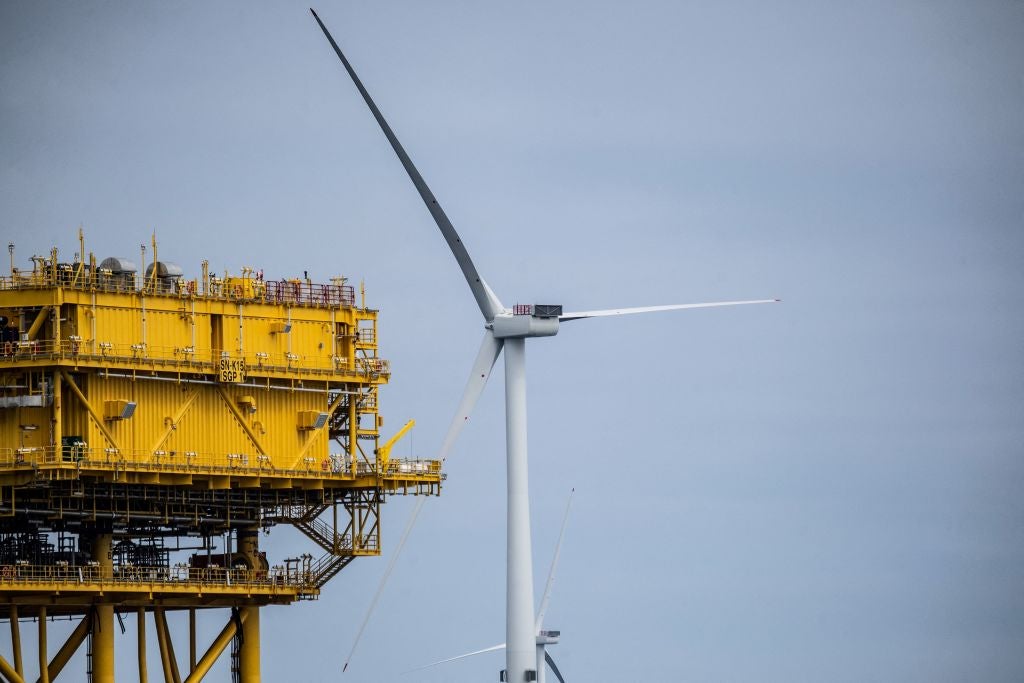
Britain wasted enough wind power last year to power one million homes due to its outdated electricity grid, finds new research from the financial think tank Carbon Tracker.
Underinvestment, combined with the sluggish pace of grid upgrades, has rendered the UK’s electricity transmission system “not fit for purpose”, with operators frequently forced to curtail wind power generation in order to match transmission capacity, the report finds.
In 2021, Britain’s grid operators curtailed seven terawatt-hours, or 4% of the country’s annual wind power generation, thanks to congestion, Carbon Tracker reveals.
The think tank calculates the cost of these curtailments, incurred by National Grid both through compensating wind farms for lost generation and paying (usually gas-powered) alternative generators to make up the shortfall, at £1.5bn ($1.9bn) since 2021, or £77 per household.
“[Grid] investments are not increasing in step with the rapid growth of wind power,” Lorenzo Sani, Carbon Tracker power analyst and report author said in a press statement. He added that without “significant improvement in the permitting timeframes for critical energy transmission infrastructure”, Britain’s power grid will not be able to support government plans to double renewables deployment from around 40GW today to 83GW between now and 2030.
Congestion is exacerbated by a mismatch between where wind farms are typically located in the UK – either in rural areas in the north of the country, or offshore in the North Sea – and where demand is concentrated, usually in urban areas further south. Because of a lack of electricity storage, the National Grid Electricity System Operator is forced to balance supply and demand in real-time.
Keep up with Energy Monitor: Subscribe to our weekly newsletterThrough a continuously online auction called the Balancing Mechanism, balancing units, which include wind farms, can either submit offers to increase generation and decrease demand, or bid on offers to the exact opposite effect.
Carbon Tracker’s analysis of data from electricity market expert data provider Elexon shows that while gas-fired plants contribute the most to both upward balancing actions (offers) as well as negative (bids), roughly a third of accepted bids are provided by wind farms. The data shows that bids provided by wind farms are on the rise, meaning congestion is rising.
Although just 40% of installed wind capacity is located in Scotland, Carbon Tracker finds that more than 95% of wind congestion events occur from wind farms located in Scotland along the “B6 boundary”, making it a “critical” bottleneck.
Modelling a ‘base scenario’ that uses existing wind and transmission capacity plans, with ‘conservative’ assumptions about electricity flows between Scotland and England (that assumes a lack of grid constraints inside the Scottish grid), Carbon Tracker projects wind capacity in Scotland will grow four-times faster than new transmission infrastructure.
Its model therefore finds that wind curtailment on this bottleneck could experience a fivefold increase to 2030, “wasting an amount of electricity equivalent to the annual electricity consumption of more than 5 million households”.
Under this scenario, one-fifth of Scottish wind output risks being curtailed by 2030, meaning Britain could lose an amount of electricity equivalent to the annual production of a 6GW wind farm to grid congestion.
Read more from this author: Polly BindmanEven accounting for a projected reduction in gas prices from next year, Carbon Tracker estimates that from 2024 onwards wind congestion costs across the B6 boundary will rise “dramatically”, reaching £2.9bn in 2026 and surpassing £3.5bn in 2030. The think tank estimates that by 2030, wind congestion costs could increase average electricity bills for British households by almost £200 per year.
The report’s authors note that other grid regions “could experience similar pressure” in the coming years as wind deployment grows; for example, the north Wales and East Anglia regions.
Britain's wind losses: speed is of the essence
To mitigate against these losses, immediate action is required. Modelling two further scenarios, Carbon Tracker’s analysis finds that delaying grid projects by one year could lead to £3.6bn in additional costs, while British households could save £3.9bn in congestion costs, were transmission projects to be accelerated by one year.
Carbon Tracker calls on policymakers and regulators to take urgent action to ensure the “timely delivery of new transmission capacity”, recommending a threefold approach to resolving existing bottlenecks with storage: combining short-term solutions with ‘limited’ impact such as battery storage; mid-term solutions with a greater impact such as hydro storage; or seasonal solutions like using electrolysers with hydrogen.
In addition, Carbon Tracker argues that the UK needs to build more transmission cables to reduce congestion. By installing two additional undersea cables connecting England and Scotland by 2030, of a similar size to those already approved, Britain could cut yearly wind curtailment almost by half, the report finds.



